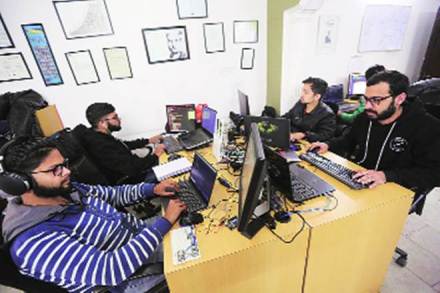By Mohan Sekhar
In this age of disruption, the ability to innovate continuously is a strategic imperative and organizations focus a lot of attention on acquiring the best and brightest talent. While having the best talent is clearly an asset, it’s not enough. Forward-looking organizations have also committed themselves to create an ecosystem for innovation and creative excellence, with workplace diversity being a fundamental building block for this innovation-led growth.
Workforce diversity is crucial, yet the conventional approach to inclusion has its limitations. Our recent ‘Getting to Equal’ research shows that an organization can have the most diverse mix of people, but unless people feel a sense of belonging and feel free to express themselves, organizations lose out on the rich perspectives they need to drive innovation. Even the most capable, multi-faceted teams can underperform if the environment they operate in is not conducive.
What’s crucial is an equal environment where people feel comfortable to bring their whole selves – unique skills, experiences, perspectives and creativity – to work. When combined, these can be a powerful multiplier of innovation and growth. A culture of equality is a powerful motivator and has tremendous influence over employees’ innovation mindset. Our research reveals that employees’ innovation mindset is 11 times greater when diversity is combined with a culture of equality, compared to companies where these are least common.
In fact, the research estimates that the global GDP would increase by USD 8 trillion if the innovation mindset across countries was to be raised by just 10 per cent.
Building a truly equal and inclusive culture requires leaders to create an open and empowering environment for people, driven by a strong sense of purpose. A portfolio of concrete measures centred on the values of diversity, inclusion and bias-free policies then set the organization on the path to achieving a culture of equality. For example, empowering your employees through training, flexibility, and a commitment to work-life balance gives them a sense of shared purpose and helps them reach their full potential. Further, tangible efforts in developing collaborative networks, encouraging knowledge-sharing and providing a degree of autonomy to challenge and ask questions, and follow through ideas are some of the ways in which organizations can ensure a plurality of voices at the workplace.
Companies that have applied these concepts and practices are leading an internal environment characterized by a culture of innovation, driven by an army of empowered employees. For instance, Microsoft’s shift from a “know it all” culture to a “learn it all” culture has invited an entirely new world of potential for the company, producing game-changing innovations and a more empathetic workplace.
Our research clearly explains three blended elements that can help organizations build a culture of equality and an innovation mindset:
- An empowering environment combined with purpose, where everyone is trusted and respected and offers the freedom to be creative and to train and work flexibly.
- Bold leadership combined with experimentation, where leaders walk the talk of inclusion and diversity and share and measures equality targets openly.
- Comprehensive action combined with inspiration, where policies and practices are family-friendly, support both genders and are bias-free in attracting and retaining people.
It is important for leaders to understand workplace culture as a complex and ongoing phenomenon. When people are truly valued for their differences and are free to be who they are, they feel empowered and inspired to bring their ideas to fruition. Hence, fostering a culture of equality is an essential ingredient for innovation, promoting out-of-the-box thinking and enabling teams to create valuable solutions for clients and communities.
The author is Senior Managing Director and Lead at Accenture Advanced Technology Centers in India. The views expressed are his own.
